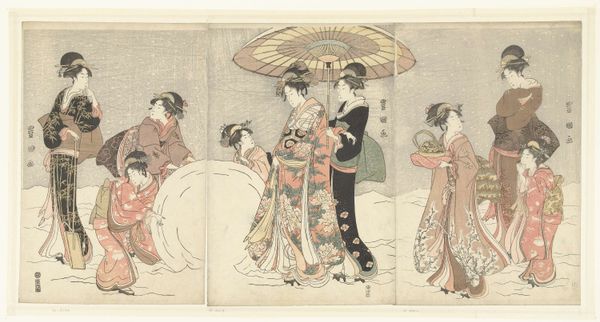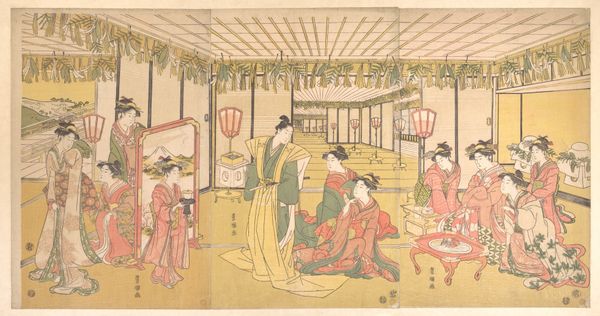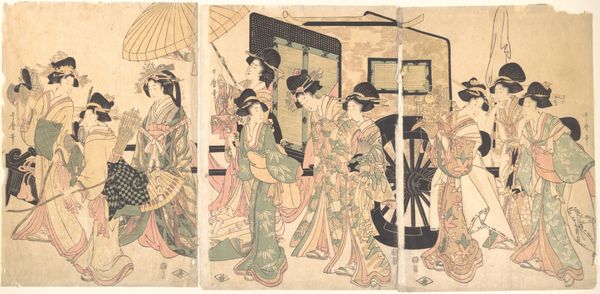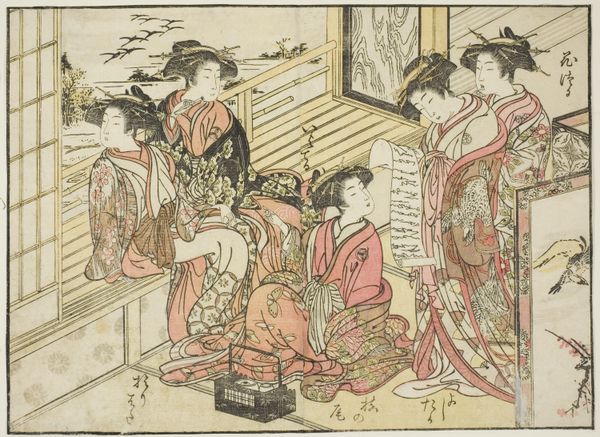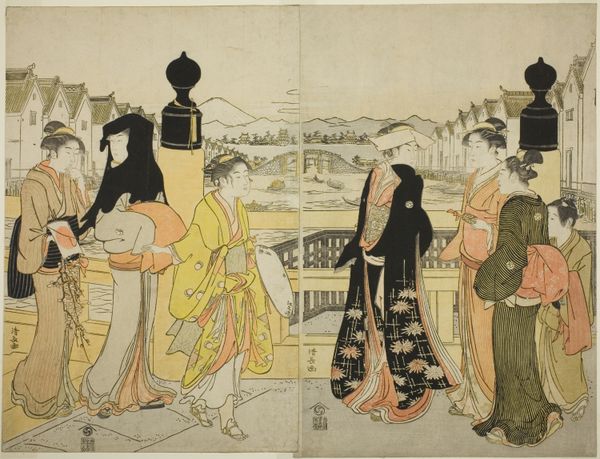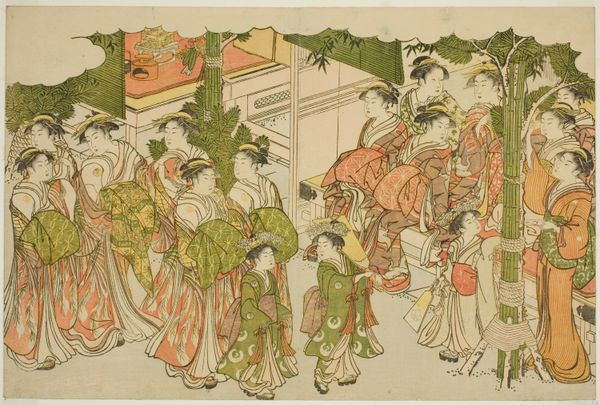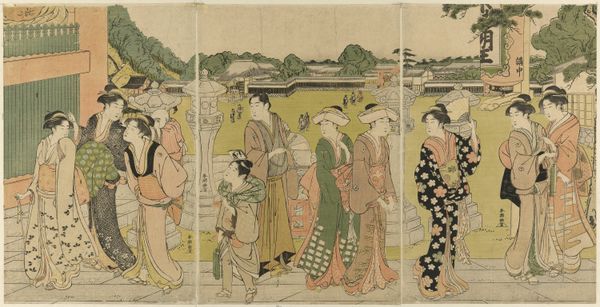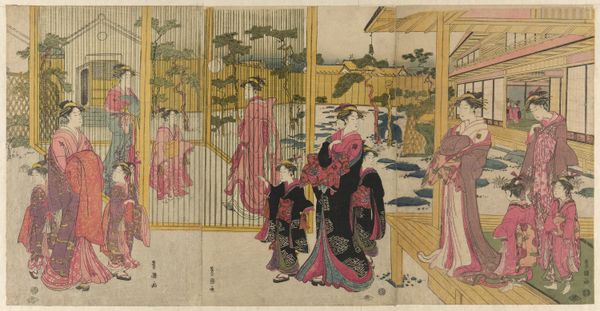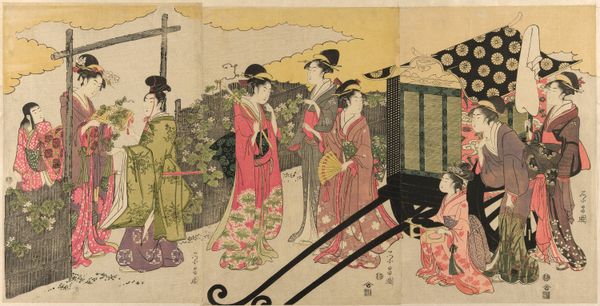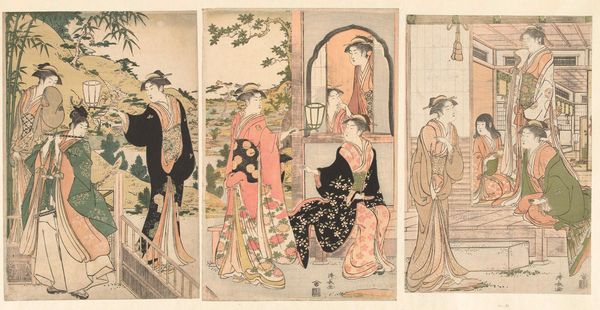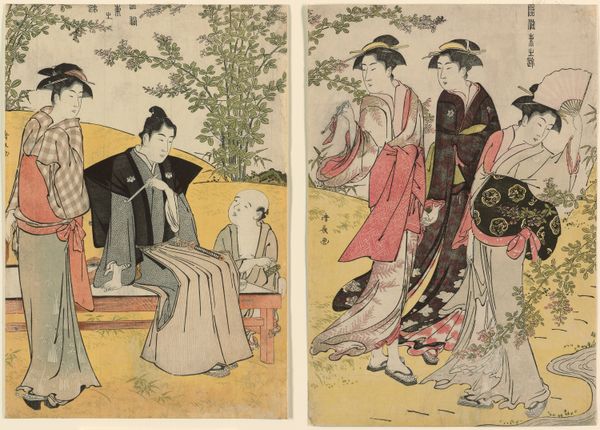
A Modern Version of Ushiwakamaru Serenading Princess Joruri c. 1785
0:00
0:00
#
portrait
# print
#
asian-art
#
ukiyo-e
#
figuration
#
genre-painting
Dimensions: 37.9 × 24.5 cm (right sheet), 37.9 × 24.7 cm (center sheet), 37.9 × 25.0 cm (left sheet)
Copyright: Public Domain
Curator: I’m immediately struck by the exquisite details of the robes; look at the labor involved in producing those intricate textile patterns. Editor: And I'm taken by the dreamlike scene! The soft colors and delicate figures create a sense of romantic longing, don't you think? Curator: This color woodblock print, "A Modern Version of Ushiwakamaru Serenading Princess Joruri," was created around 1785 by Torii Kiyonaga. As you see, he has employed several blocks to achieve a high level of detail and subtle color gradations. Editor: Yes, but notice how he adapted an ancient narrative to comment on contemporary life! The image references the tale of young Ushiwakamaru—later the famous warrior Minamoto no Yoshitsune—but the setting, dress, and overall feeling reflect the artist’s era. The artist is transporting the symbolic meaning. Curator: The materials used, such as the paper and the pigments, were likely sourced locally. The artist would have been working within a system of workshops and publishers; consider the economic aspect, the accessibility of Ukiyo-e as art for a wider populace. The print’s survival speaks to its material quality and how it was valued. Editor: Beyond commerce, Kiyonaga is manipulating imagery loaded with cultural associations. Lanterns, for instance, not only illuminate the night but also represent transient beauty and fleeting moments, deepening our understanding of the emotional intensity of youthful love. Curator: Interesting perspective. The lanterns draw attention, of course, and are very tactile elements. Consider, for example, how many artisans likely handled and labored over the objects depicted in the artwork, which may be easily missed on first glance. Editor: But to what end, if not to enhance the viewer’s contemplation of the symbols themselves and thus a deeper understanding of what we once held sacred, and sometimes still do? How beauty and love were, and perhaps should be, viewed. Curator: Well, I see how my concentration on materials informs a historical lens—one can learn a lot about craftsmanship by careful looking! Editor: Absolutely! And focusing on the image unlocks enduring narratives and connections to universal themes. That kind of memory woven in image endures.
Comments
No comments
Be the first to comment and join the conversation on the ultimate creative platform.
